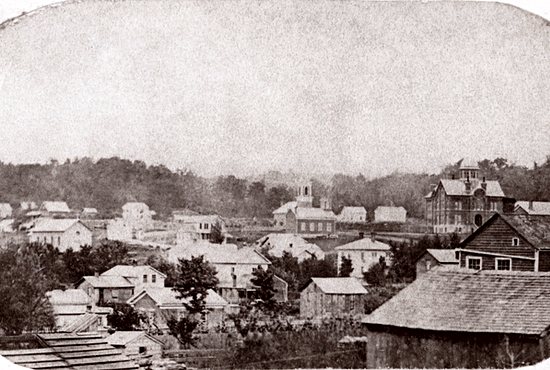
In the 1850s, the founding families of St. Joseph in Red Wing — many of them German immigrants still mastering English — welcomed into their homes a priest with a French accent who came monthly on horseback to say Mass.
Language must not have been that much of an issue, because Father Felix Tissot, who served missionary Catholic communities in Goodhue and Wabasha counties of southeast Minnesota, charged the 15 families, German and Irish, in 1862 with building a church.
In 1865, Bishop Thomas Grace dedicated their first modest wooden church, located in what is now the archdiocese’s southeast corner, naming Father Christian Knauf as the first resident pastor. The parish’s boundaries extended north to Miesville, southwest to Goodhue and southeast into the limits of Lake City. St. Joseph became the patron, probably because the saint was especially significant to Germans, said Father Thomas Kommers, current pastor.
The immigrant congregation, later joined by Polish and other Slavic immigrants, was determined that their parish would be American.
“It’s quite remarkable,” Father Kommers said. “They wanted to honor their background and where they came from and keep up some of their traditions, but most of all they wanted to be American Catholics.”
Frederick and Anna Busch and their eight children were among the parish’s early German families. From their family came Bishop Joseph Busch, who served as bishop in Lead, South Dakota, and St. Cloud, Minnesota, as well as a monsignor, a religious sister and perhaps more vocations. After Frederick’s 1908 death, Anna donated to the parish some of the land on which the current church stands, according to parish historian Jeff Grosso, a parishioner since 1981.
Land for the parish’s Calvary Cemetery was sold to the parish in 1868 by Vital Bouiere, a member of the Dakota tribe.
As the parish grew, the 100-seat wooden church became too small. In 1877, Father John Stariha as pastor oversaw the building of a cruciform-shaped church of buff-colored stone with room for 400. The old church’s materials were used for an addition to the school the parish had built in 1873.
In July 1890, tragedy hit when the Sea Wing, a ship carrying about 215 passengers, overturned in Lake Pepin during a thunderstorm, and 98 drowned, including eight St. Joseph parishioners, Grosso said.
The ship was returning from an excursion in Lake City. The incident is still considered one of the worst maritime disasters of the upper Mississippi River.
By 1960, parish leaders anticipated Red Wing’s growth, and under Father H. Derham Ryan, planned for several new buildings, including a new church.
The church was built during the Second Vatican Council and its first Mass was celebrated in 1965, the year the council closed. Its design anticipated council changes. The 16-sided cylindrical structure is fan-shaped with seating that curves around the sanctuary. It was one of the first of its kind in the archdiocese, said Father Kommers, who is retiring after 18 years as pastor at the end of June.
A modern statue of St. Joseph is mounted on a church wall. Another statue of St. Joseph was removed from the stone church before it was demolished. The parish no longer has that statue and leaders don’t know of it still exists. The parish is restoring a large painting of St. Joseph with the child Jesus from the 1890s.
Though parish leaders had planned for continued growth, the city didn’t expand as expected. In 2014 the parish school closed permanently, Father Kommers said. St. Joseph now serves around 1,000 households, 200 of them Latino, the parish’s most recent immigrants, he said.
The parish typically honors St. Joseph at Mass on his feast days. Father Kommers said he appreciates St. Joseph’s role as a humble worker.
“Maybe some of that is apocryphal, but still, it’s something very nice and I think genuinely kind of good about the notion that it is humbling for all of us,” he said.
St. Joseph is also inspirational as a father, Grosso said.
“For me, he’s the ultimate father figure,” he said. “When you’re a parent you think about the things that St. Joseph had to do. … He’s an example of what perseverance and fatherhood should be like.”
Editor’s note: This is the fourth story in a monthly series on 10 places in the Archdiocese of St. Paul and Minneapolis with connections to St. Joseph.



